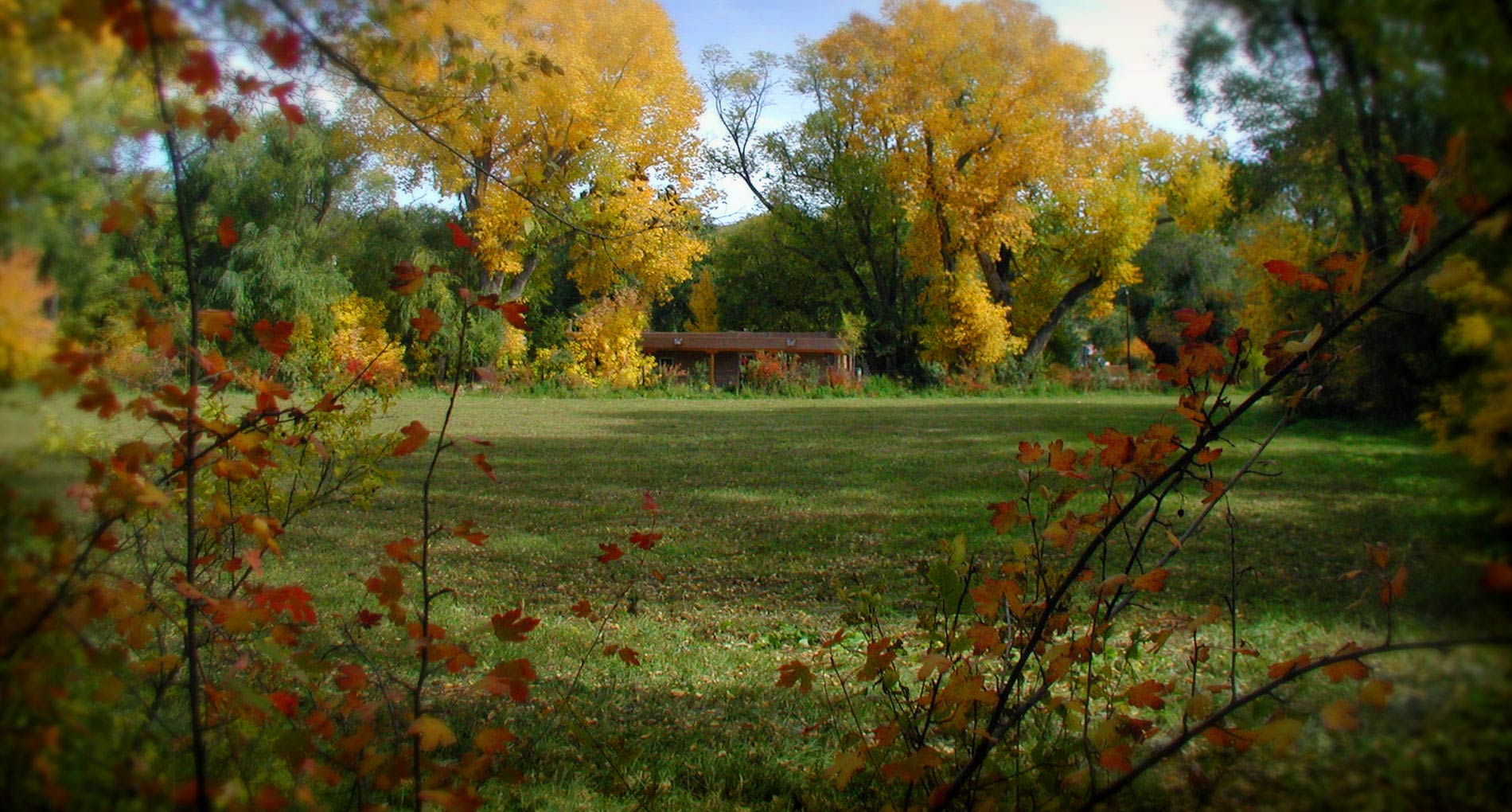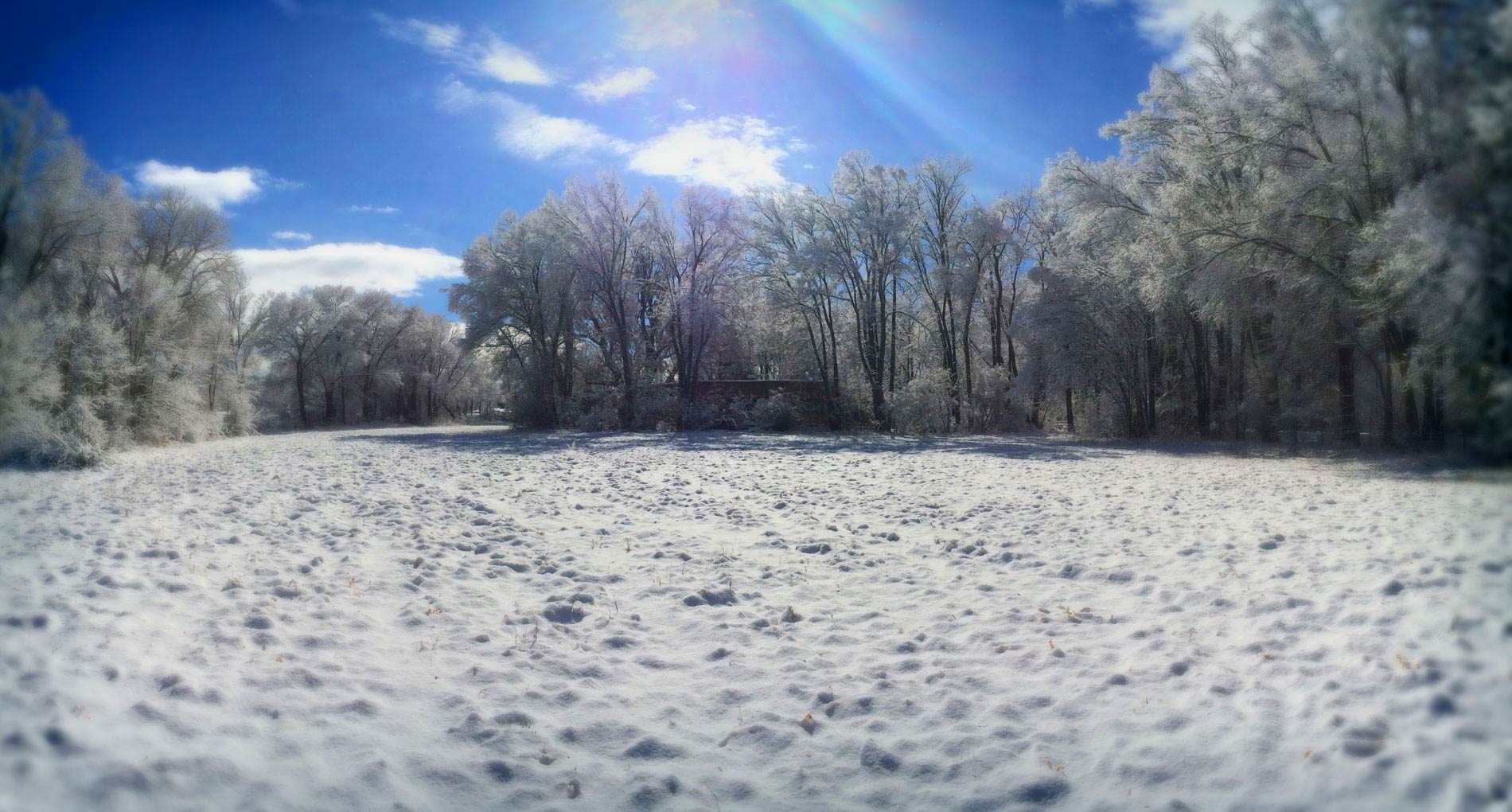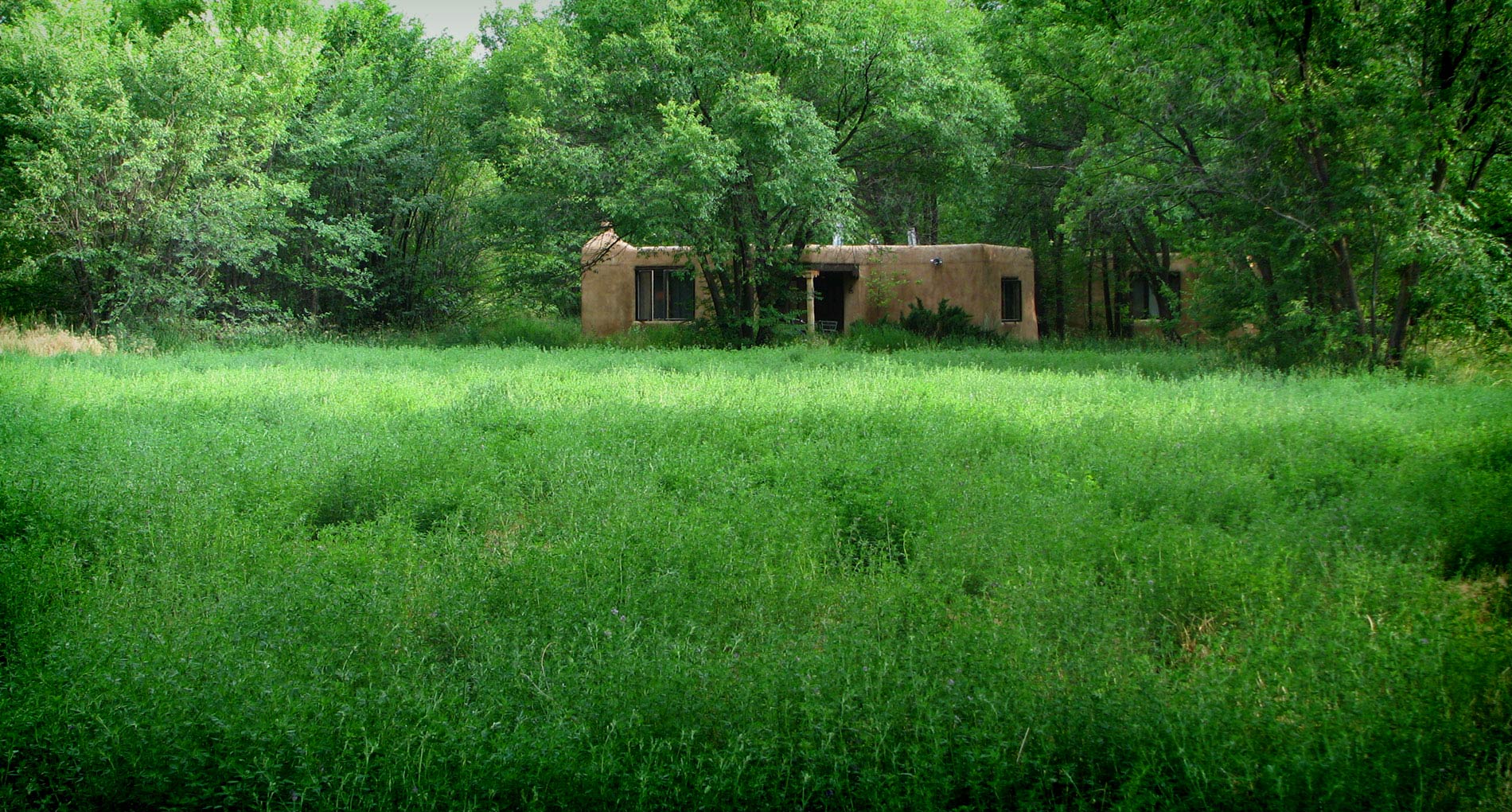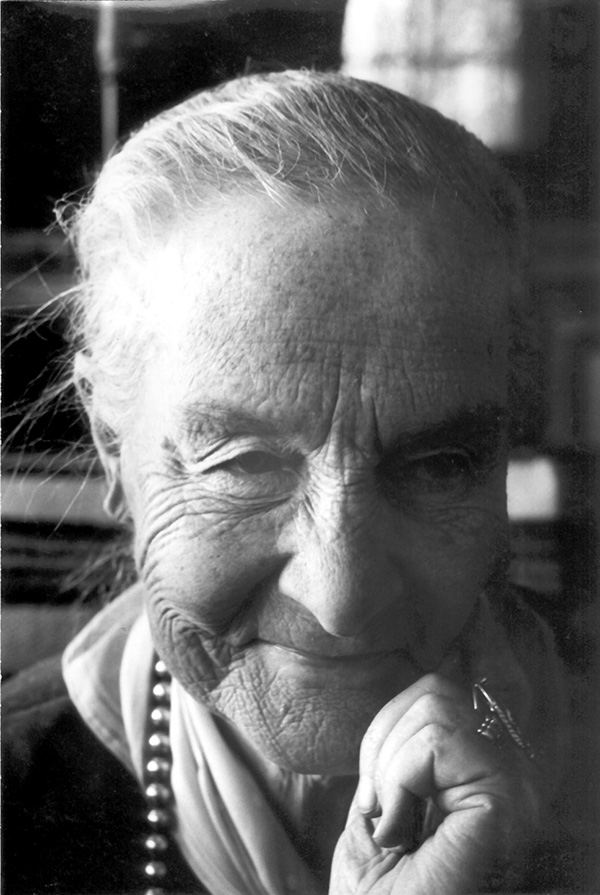








"Much of the good work which Mrs. Wurlitzer ...accomplished. ..remained anonymous, since it was always done without fanfare or desire for recognition. ...It is fortunate...to find a patron of the arts with such profound and universal understanding, yet without the least desire to command attention."
REMEMBERED by friends in Taos as gracious, quiet, and unassuming the presence of Helene V. B. Wurlitzer (1874-1963) in the art colony went unnoticed by many Taoseños. Nevertheless, her impact on the art colony from the 1940s, when she became a permanent part-time resident, was substantial and lasting. It was then that she began buying works by Taos artists, a practice which lasted through the 1950's when she established a residency program for artists in the creative fields, painters, writers, and musicians on the grounds of her home.
By 1887, Helene's father, Gustav Billing had become the foremost authority on mining in the Southwest; he also had become prosperous enough to move his family back to Cincinnati, where his and his wife's families had lived since the mid-1800s in the tight-knit German community. A year later, he decided to provide his children with Europe's cultural and educational opportunities and moved his family to his native Germany. Helene attended a private girl's school in Freiburg, an old community in the Black Forest area. When her father died unexpectedly in 1890, Helene's mother returned with the children to Cincinnati.
Taking over her husband's enterprises, she became an astute businesswoman, continuing to manage the Socorro mine from Cincinnati and traveling to New Mexico at least twice a year to inspect it and look after the welfare of the miners. The family's abiding affection for New Mexico was evident in the name they chose for their new Cincinnati home: "Socorro"

Both her German heritage and Cincinnati's rich cultural life gave Helene the opportunity to meet young people with similar backgrounds and interests. Sometime in the early 1890s she met Howard Wurlitzer, whose family manufactured the famous Wurlitzer musical instruments. The two became engaged in 1894 and were married in a large traditional German wedding in the fall of 1895. While Howard ran the Wurlitzer business, Helene continued her intellectual and artistic pursuits: she studied Russian and for a short time wrote a column for the Cincinnati Volksblatt. She played music for the family, attended concerts and operas, and hosted string quartets in her home. Because of her interest in music and her connection to the Wurlitzer Musical Instrument Company, Helene devoted most of her time and energy to the Cincinnati College of Music, funding numerous programs and scholarships. She often opened her home to students, entertaining them and introducing them to influential Cincinnatians. In 1936, the College appointed her its first woman trustee, a position she held for fifteen years.

In 1939, following the death of her mother, who had been her friend and companion after Howard's death in 1926, Wurlitzer realized that little remained to hold her in Cincinnati. At the time, one of her scholarship students, Eduardo Rael (b. 1916), a native of Taos who was studying voice at the Cincinnati College of Music, urged her to visit his hometown. Drawn by her youthful memories of New Mexico, Wurlitzer visited Taos in 1940 and was irresistibly attracted to the small village. That summer she bought fourteen acres of land approximately one mile east of the Taos plaza from Rael's mother. The following year Rael introduced Wurlitzer to Arturo V. Martinez y Salazar, whom she hired to design and build her home. When it was completed, she had a wooden lintel installed above the entrance door that read: "Built in the 11th Hour, 1942." The term "11th Hour" referred to the fact that the house was completed shortly before building materials became scarce during the involvement of the United States in World War II.
From 1942 to 1955, Wurlitzer spent summers in Taos and winters in Cincinnati. In 1956 she discontinued her winter departures from New Mexico, sold her Cincinnati house, and made Taos her year-round home. She had begun in the early 1940s to cultivate friendships with several artists and to buy their art. Like many patrons, she primarily collected art by the artists she knew and liked best; this resulted in a collection of works by many of the most accomplished artists working in Taos. Although she acquired paintings from some of the more established, conservative Taos artists such as Ernest Blumenschein, Bert Phillips, Victor Higgins, Oscar Berninghaus, and Joseph Henry Sharp, she was strongly attracted to the work of modernists and began collecting the works of Thomas Benrimo (1887-1958), Andrew Dasburg, Emil Bisttram, Gene Kloss, Howard Cook, Dorothy Brett, and Rebecca James. Wurlitzer also occasionally bought works from contemporary Hispanic and Native American artists such as Patrociño Barela and Woody Crumbo. Perhaps her favorite artist was painter Earl Stroh, who received more support from her than any other Taos artist.

In 1947 Stroh had arrived in Albuquerque to study art at the University of New Mexico. He spent that summer in Taos attending the university art department's summer session at the Harwood Foundation. Andrew Dasburg, who was a visiting critic that summer, impressed Stroh: "I was, like many of the other students, struck with his insight into the problem of painting. It was immediately obvious that here was an artist interested in your work, in your possibilities and sensibilities and not just in passing on his methods or style. ...I arranged to return to Taos the following summer to work with him privately.
The following summer was auspicious for Stroh. He was studying with Dasburg, who, according to Mabel Dodge Luhan, had a curious power over other artists. ..a magic hand that drew from the student the potential creativeness that so often is unawakened and lies dormant a whole life through. "Stroh's work came to the attention of Eulalia Emetaz, who had opened La Galeria Escondida in 1946. She offered him his first one-man show; it was there that Wurlitzer saw his work and arranged to meet the young artist. They became friends immediately.
The seeds for the Helene Wurlitzer Foundation of New Mexico, established in 1954, were planted with Wurlitzer's sponsorship of Earl Stroh. She began buying Stroh's work in 1948, the year she provided him with a residence on her property, the first artist's residency offered by Wurlitzer. Over the next several years Stroh regularly occupied one of the casitas on Wurlitzer's property known as House #5; she later had a studio added to House #5 for her protege. Additionally, she gave Stroh a stipend to cover his housing expenses while he studied art in New York and Paris in the early 1950s.

Like several other patrons who lived or spent significant time in Taos, Wurlitzer extended her patronage to artists by inviting them to share meals with her (and provide her with interesting company). Stroh, Dasburg, Rebecca James, Emil and Mayrion Bisttram, and Tom and his wife, Dorothy Benrimo (1903-1977), who also was an artist, were frequent guests at dinners hosted by Helene Wurlitzer. Further, when artists had special medical needs, Wurlitzer often arranged to pay the doctor bills or get medicine to them anonymously.
By buying art and, in the case of Earl Stroh, providing housing and stipends-and through her hospitality and friendship- Wurlitzer helped support Taos artists through the late 1940S and into the 1950s. Indeed, through the foundation she was able to realize her desire to "give aid to those students and professional workers in the field of art, music and literature who would, without aid, be unable to pursue or continue their creative work."
Through the years until her death in 1963, Wurlitzer continued to buy works from Taos artists, much of which she eventually gave to friends as well as to the Harwood Foundation Museum, the Museum of Fine Arts in Santa Fe and the Cincinnati Art Museum. Her patronage and legacy continue today through The Helene Wurlitzer Foundation of New Mexico, a residency program that fosters and encourages creative talents in Taos.
Source of Article:
Taos Artists and Their Patrons 1898-1950
© 1999 by the Snite Museum of Art,
University of Notre Dame